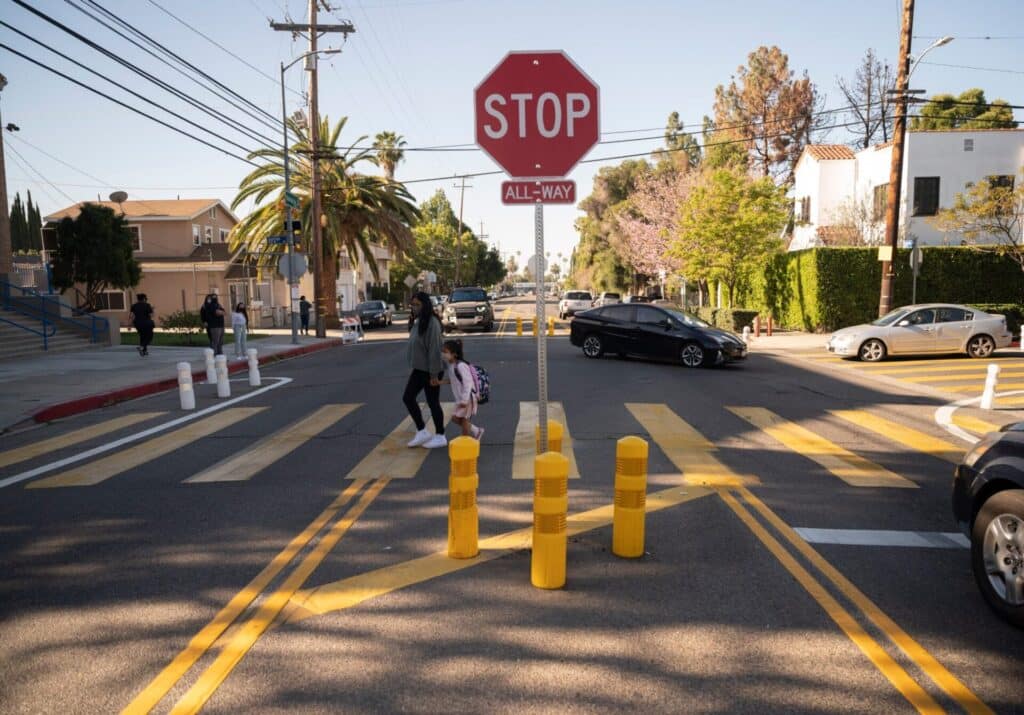Washington, D.C., September 23, 2013
The National Association of City Transportation Officials (NACTO) unveiled a new design manual for city streets today.
A blueprint for the 21st century streetscape, the Urban Street Design Guide demonstrates how streets of every size can be reimagined and reoriented as safe, sustainable public spaces for people walking, driving, biking, and taking transit. In cities, streets must serve multiple purposes, from storefront or doorstep to throughway. The Guide emphasizes the core principles for making urban streets great public places with an instrumental role in building communities.
The guide is a follow-up to NACTO’s successful Urban Bikeway Design Guide, released in 2011. The Urban Street Design Guide provides a holistic view of the street that includes all of the designs from the Bikeway Guide within a plan for the entire street.
“NACTO’s Urban Street Design Guide is a toolkit for cities to create safe, multi-modal streets that meet the needs of all users, providing an alternative to existing design books that treat city streets as mini-expressways,” said Janette Sadik-Khan, New York City Transportation Commissioner and President of NACTO. “The innovative strategies outlined in the Guide are transforming the streets of New York, advancing a people-oriented approach to transportation policies.”
Recognizing the need for improved guidance, officials and practitioners from NACTO member cities worked with a team of leading planners and designers to document best practices in contemporary urban street design. Guide users can view detailed plan drawings, renderings of the designs, and pictures of innovative projects from around the country.
“These state-of-the-art guidelines demonstrate that cities are leading the way in designing inviting and functional streetscapes,” said Edward Reiskin, San Francisco Director of Transportation and NACTO Vice President. “From parklets to green alleys, innovative transportation projects that are piloted in cities like San Francisco have spread to more and more cities across the country. The Guide should be adopted as the new standard for street design.”
“The Urban Street Design Guide shows how cities can transform the most basic infrastructure to give people and companies what they demand: vibrant places that offer more choices, better connectivity and a higher quality of life,” said Bruce Katz, vice president and founding director of the Brookings Metropolitan Policy Program.
“As Chicago implements our Make Way for People Initiative, the principles included in the Urban Street Design Guide have proven essential to creating walkable neighborhoods,” said Gabe Klein, Chicago Transportation Commissioner and Treasurer of NACTO. “The Guide is helping Chicago build complete streets and public plazas that support local businesses and vibrant community life.”
Michael Myers, Senior Policy Officer at The Rockefeller Foundation, which supported the book, called the Urban Street Design Guide “a powerful new tool to reimagine city streets as transformative urban environments that meet the needs of everyone from pedestrians to drivers.”
“This is what success looks like,” said Darryl Young, Director of Sustainable Cities at The Summit Foundation, which also supported the book. “The Guide shows how to design a street and city that works for all of us.”
“Today’s cities must pursue a variety of transportation options, offering safe, convenient, and inclusive choices to residents and visitors,” said Wylie Bearup, Phoenix Streets Department Director and NACTO Secretary. “The Guide is an exceptional resource for cities like Phoenix as we redesign urban streets.”
The focus of the Guide is street facilities, ranging from boulevards to neighborhood streets, transit corridors to green alleys. The Guide also covers street design elements, such as curb extensions, lane width, green stormwater infrastructure, and sidewalks; intersection design elements, such as crosswalks and traffic signal timing; and interim design strategies including parklets, temporary street closures, and public plazas.
The NACTO Guide can be adopted by individual cities, counties, or states as either a stand-alone document or as a supplement to other roadway guidance documents.
The Urban Street Design Guide is available for purchase from Island Press (islandpress.org) and as an interactive document that can be found online at nacto.org/usdg.
Development of the Guide was supported by The Summit Foundation and The Rockefeller Foundation.
A PDF version of the press release is available at this link.
###
About NACTO
NACTO is an association of 16 major US cities formed to exchange transportation ideas, insights and practices and cooperatively approach national transportation issues. Members include Atlanta, Baltimore, Boston, Chicago, Detroit, Houston, Los Angeles, Minneapolis, New York, Philadelphia, Phoenix, Portland, San Diego, San Francisco, Seattle and Washington, DC. Affiliate members of NACTO include Arlington (VA), Austin, Burlington (VT), Cambridge, Hoboken, Indianapolis, Louisville, Memphis, Oakland, Salt Lake City, and Ventura (CA).


